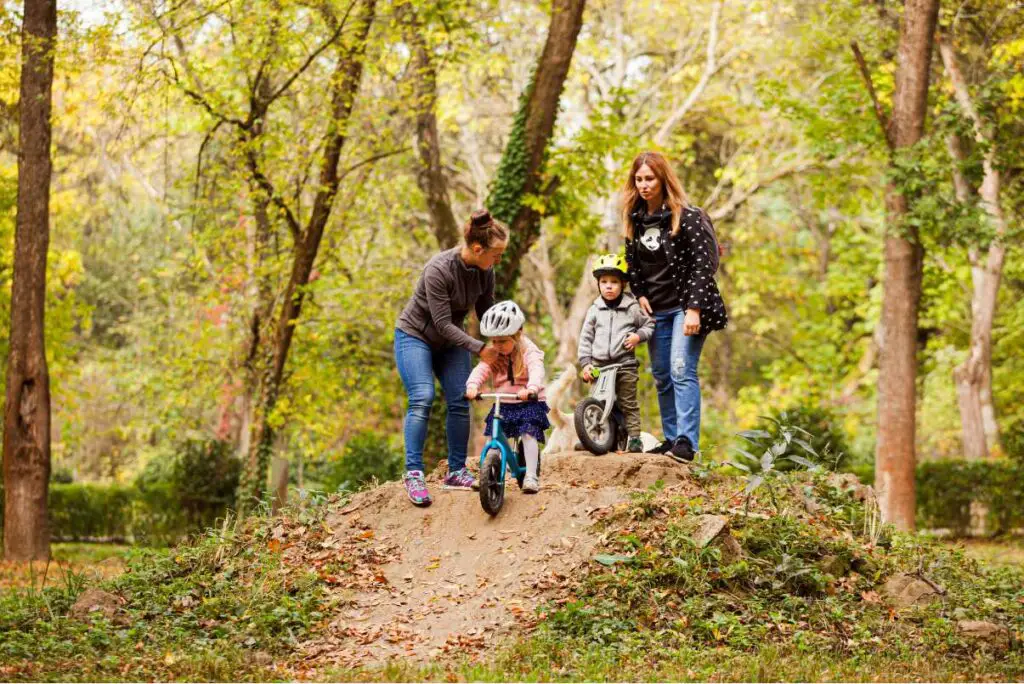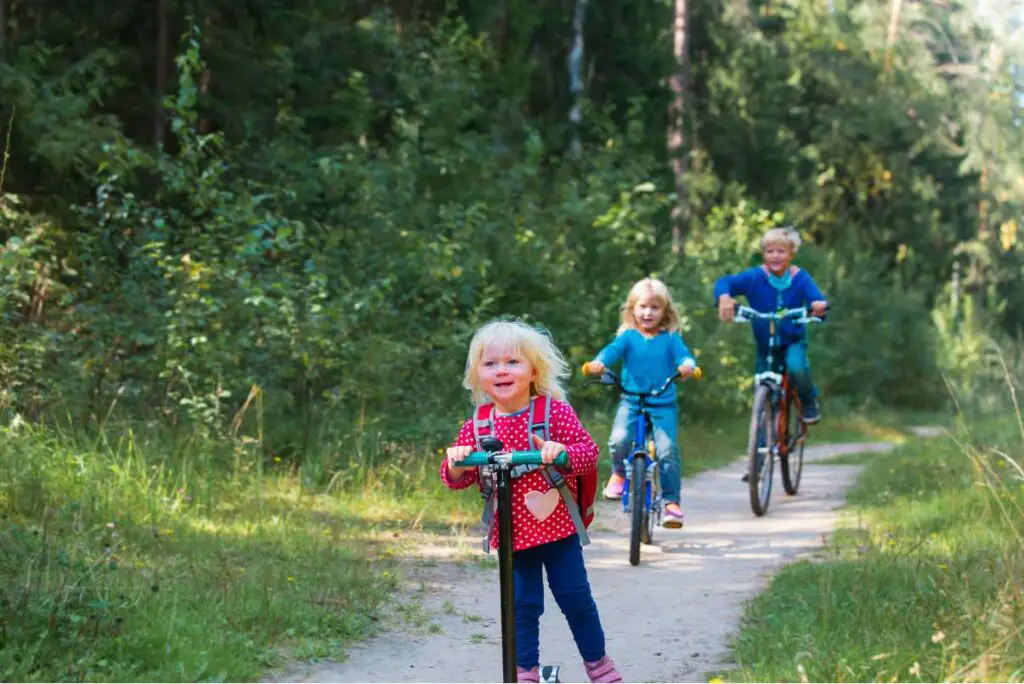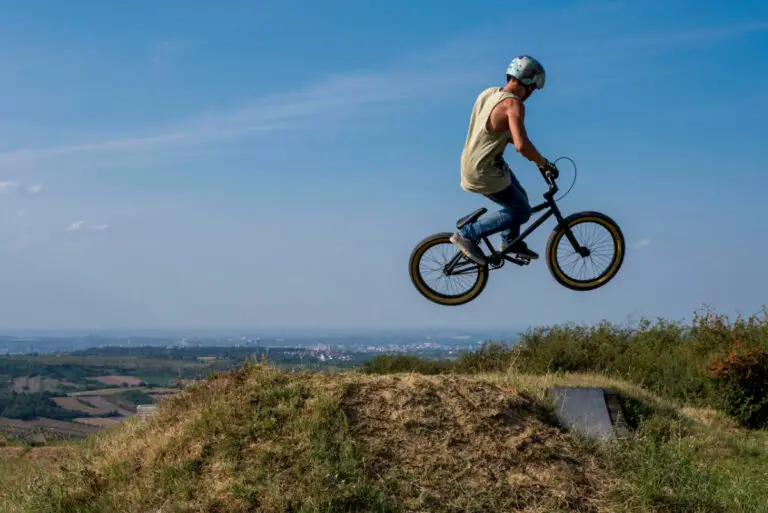Teaching Kids How To Ride A Bike: The Details

Bicycle riding is a key milestone for youngsters and may be a gratifying and enjoyable experience.
Most youngsters may learn to ride a bicycle in a short period of time if they take the appropriate technique and are patient.
This article will provide step-by-step instructions on how to teach your child to ride a bicycle, from selecting the correct bike to enforcing safe riding practices.

Choosing the Right Bike
Choosing the correct bicycle is the first step in teaching a youngster to ride a bicycle.
It is crucial to choose a bicycle that fits your child’s age, height, and skill level. Consider the following factors when selecting a bicycle for your child:
Size
Ensure that your child can comfortably reach the pedals and handlebars and that the bike is stable and easy to ride, by selecting a bike with the appropriate dimensions.
You can use a bike size chart or visit a bike store and ask a professional to assist you to measure your child’s inseam and height to determine the correct bike size.
Type
There are numerous options for children’s bicycles, including balance bikes for toddlers, mountain bikes for older children, and road bikes for experienced riders.
Consider your child’s age, interests, and intended use while picking a bicycle.
Condition
It is essential to select a bike in good condition, with all parts functioning well.
Before acquiring a used bicycle, you should conduct a comprehensive inspection to ensure that it is safe and in good functioning condition.
Preparing for the First Ride
Prior to your child’s first bike ride, you should take the time to prepare them and the bicycle. Here are some considerations:
Adjust the bike to fit your child
Before your child is on the bicycle, be sure to adjust the seat and handlebars to the correct height.
This will guarantee that kids can reach the pedals and handlebars easily and that the bicycle is sturdy and comfortable to ride.
Check the bike’s safety features
Prior to your child’s first bike ride, it is essential to inspect the bicycle’s safety features to ensure that it is safe and ready to ride.
This may involve evaluating the brakes to ensure they are functioning properly, checking the tire pressure, and ensuring the bike is in good working condition.
Before you purchase a secondhand bicycle, you should conduct a comprehensive inspection to ensure that it is safe and in good condition.
Consider acquiring and installing any additional safety equipment, such as lights and reflectors, to boost your child’s visibility while riding.
By taking the time to inspect the bicycle’s safety features, you can help guarantee that your child has a safe and pleasurable cycling experience.
Encourage your child to wear a helmet
Helmet use is an essential safety step when riding a bicycle.
Encourage your child to wear a helmet every time they ride a bicycle, and ensure that the helmet is properly fitted and secured.
Choose a flat, open area for the first ride
To make the first bike ride as simple and stress-free as possible, select a flat, unobstructed region devoid of traffic. A park’s grassy field or paved path can be suitable alternatives.
Remove the pedals
If your child is learning to ride a bicycle with pedals, you may wish to remove the pedals for the initial few trips.
Without the extra difficulty of pedaling, your youngster can develop a sense of balance on the bicycle.

Teaching Your Child to Ride a Bike
Once you and your child are prepared, you should begin teaching them how to ride a bicycle. Here are some suggestions for making the process as smooth and productive as possible:
Start with a balance bike
Consider starting with a balance bike if your child is very young or has never ridden a bike before. A balance bike is a miniature bike without pedals that enables your child to learn balance and steering by just walking or jogging with it.
This might be an effective approach to introduce your child to the concept of riding a bicycle and help them develop confidence and balance.
Hold the bike steady while your child gets on
To help your youngster feel more secure, stabilize the bicycle when they mount it. Encourage them to place their feet on the ground and sit on the seat.
Walk with your child as they push off
Walk alongside your child as they depart. Once your child is comfortable sitting on the bike, encourage them to start pedaling with their feet.
Walk beside the bicycle and grasp the seat’s backrest for support and stability.
Let go when your child is ready
Gradually let go of the bike as your child gains confidence and balance, and enable them to ride on their own.
Encourage them to maintain their eyes on the road and look ahead, and to use the brakes to slow down or stop.
Practice, practice, practice
Bicycle riding is a new ability that requires practice to acquire. Encourage your youngster to continue practicing and reassure him or her that it is acceptable to make mistakes.
The more they exercise, the greater their confidence and proficiency will grow.
Reinforcing Good Riding Habits
Once your child has learned to ride a bicycle, it is essential to reinforce appropriate riding practices to ensure their enjoyment and safety. Here are some important considerations:
Remind your child to always wear a helmet
Helmets are an important safety measure that can assist protect your child’s head in the event of an accident or fall.
Remind your child to always wear a helmet when riding a bicycle, and check that the helmet is properly fitted and secured.
Teach your child to follow the rules of the road
It is essential that you teach your child to obey the rules of the road when riding a bicycle, including stopping at stop signs, looking in both directions before crossing the street, and using hand signals to indicate turns.
Encourage your child to be visible and predictable
Encourage your youngster to make herself visible to others while riding a bicycle to help ensure their safety.
This may involve the use of bright or luminous clothing, lights or reflectors on the bicycle, and hand signals to convey intent.
Remind your child to check their bike before riding
Encourage your youngster to inspect their bicycle before each ride to verify that it is in good working order.
This may involve ensuring the tires are correctly inflated, testing the brakes, and examining the bike for any signs of damage or wear.
Supervise your child when they are riding
It is crucial to observe your child as they are learning to ride a bicycle, especially when they are just starting out.
This can help safeguard their safety and allow you to provide guidance and support as required.
As your child becomes more experienced and self-assured, you may gradually lower your supervision, but it’s still a good idea to check in on them frequently to ensure they’re following safe riding habits.
Teaching a child how to ride a bicycle may be a gratifying and enjoyable experience. By adhering to the aforementioned guidelines, you can teach your child to ride a bicycle safely and with confidence.
To guarantee a positive and joyful cycling experience for your child, make sure to choose the correct bike, prepare for the first ride, and reinforce excellent riding practices.


